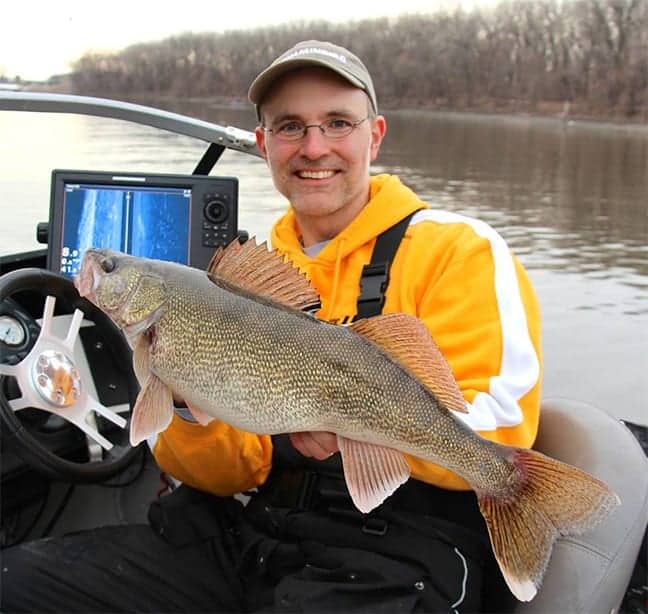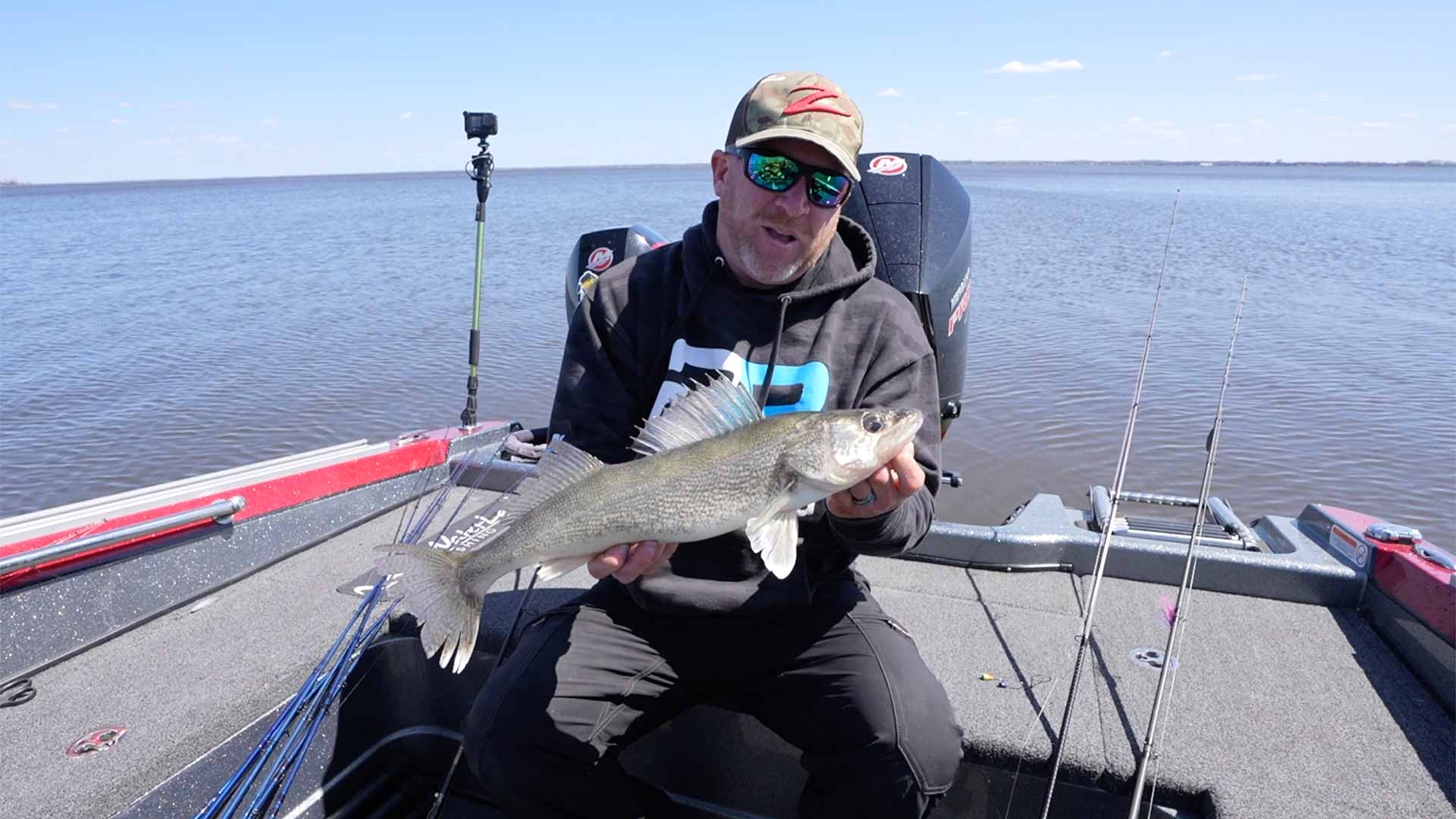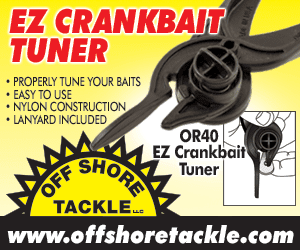Dr. Jason Halfen shows off a little Flex Appeal
In a typical year, mid-February finds most of the Upper Midwest firmly encased in ice, other than some small pockets of open water below dams, agitated by sufficient current to create an ice-free zone in the immediate dam area. If you find enough open water or thin, breakable ice between the boat launch and the open zone, you can launch a small boat and get your licks in where the walleye season remains open all winter long.
This year, well, we’re doing a lot better than mini pools near dams. And with warm weather predicted in the weeks ahead, it looks like a widespread open season on river walleyes on the Missouri River, Upper Mississippi, Wisconsin, Wolf and Fox Rivers in Wisconsin, and the Detroit, St. Clair and Saginaw Rivers in Michigan. With the Rainy River in Minnesota soon to follow, likely sometime in March.
If open water is limited, vertically jig jigs & minnows around the perimeter of the general hole area below a dam. Fishing ¼-ounce jigs in 10 to 20 feet should be typical during modest flow conditions; try fishing deeper, with heavier jigs, on swifter rivers like the Detroit and St. Clair.
 Once rivers open more substantially, however, don’t limit your attention to the main hole below the dam. Chances are that’s mostly sauger and banana-walleye territory, anyway. Probe downriver a mile or more, looking for eddies, current breaks near islands or points, wing dams, etc., even if they’re not all that deep. Six or 8 feet of water might be plenty deep to hold groups of larger prespawn female walleyes, particularly during lowlight conditions in early morning and at dusk.
Once rivers open more substantially, however, don’t limit your attention to the main hole below the dam. Chances are that’s mostly sauger and banana-walleye territory, anyway. Probe downriver a mile or more, looking for eddies, current breaks near islands or points, wing dams, etc., even if they’re not all that deep. Six or 8 feet of water might be plenty deep to hold groups of larger prespawn female walleyes, particularly during lowlight conditions in early morning and at dusk.
Once again, the jig & minnow deal is great for cold water, although there’s another wrinkle well worth trying: substituting 4-inch, soft plastic ringworms for a minnow. While primarily designed for bass, these little gems are ultra-flexible, even in 32 F water. I suspect the little gaps between the rings also trap, then release air bubbles when the worm flexes, attracting attention. Admittedly, however, I have yet to dive beneath ice floes to observe them in action, so my suspicions are only that.
Jig ringworms as you drift, just like a minnow. Anchor, cast them out on a lighter jighhead—like 3/32- to 3/16-ounce—let them drop to bottom, and allow them to tumble downriver in light current. The right jig weight achieves a slow tumble each time you lift your rod tip, then lower it as you retrieve a little line.
Once spring and high water arrives, walleyes often penetrate flooded shoreline wood cover. Jigmeisters on the Upper Mississippi actually cast and swim these same jigworms back over and through flooded branches and logs, sacrificing the occasional snagged lure to the woodland fish gods. Basically, though, you’re not going to believe how well it works until you try it. Meantime, shallow jig-casters will likely continue to win most postpawn walleye tournaments while the crowds of vertical jiggers drool in the pool.
But that’s later, like late March and April! In the meantime, focus on the main river, below or near dams, tickle the bottom, fish current breaks, and stick a few early river ‘eyes, where legally available. Spring comes early on big rivers, and the walleyes are already lining up, ready to chew.










